“Lighting with an Accent”
By Gabriel I. Alonso M.Photog.,Cr. CPP
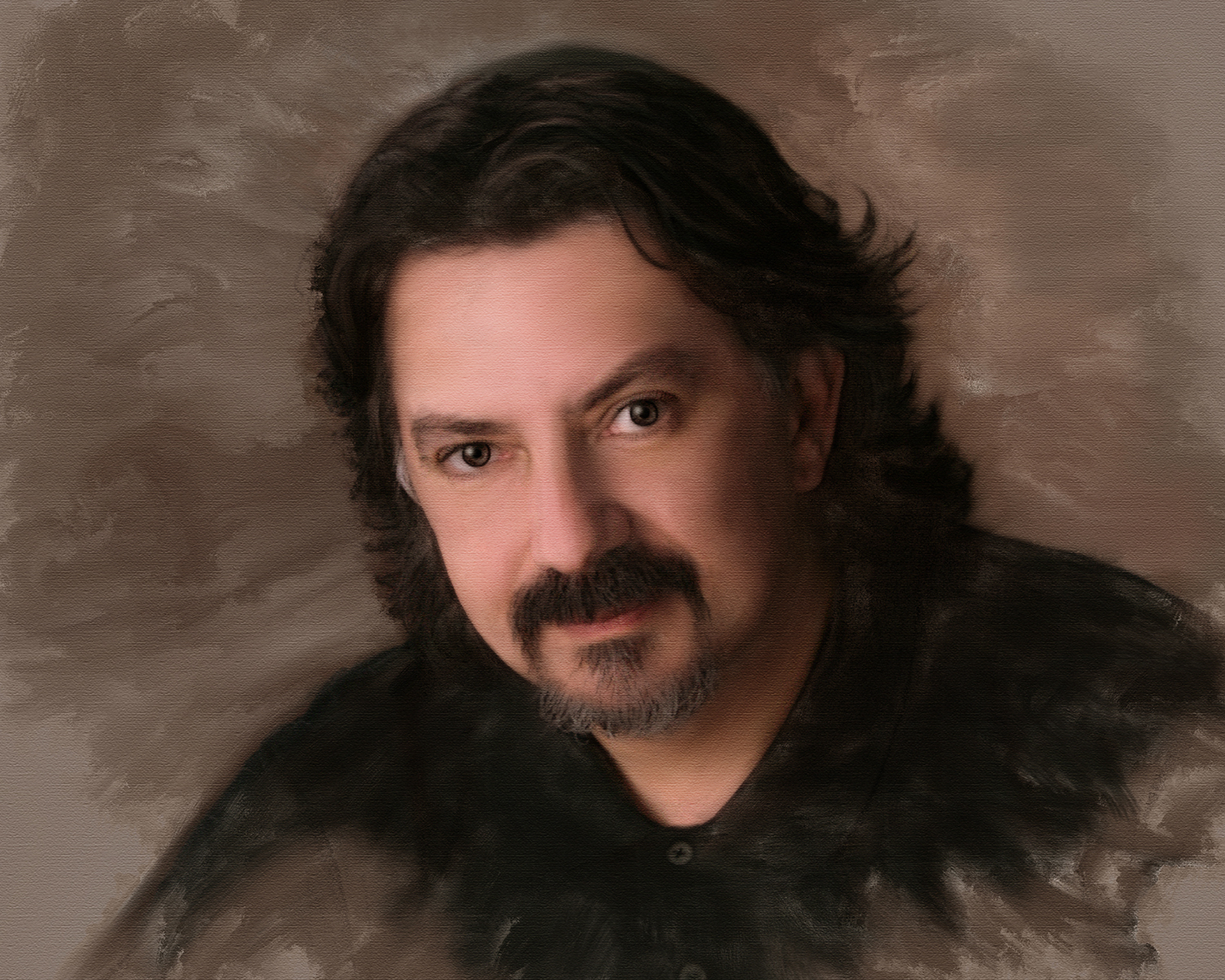 When I started to get serious about learning lighting techniques, there were never enough ways and lighting devices to incorporate into a lighting scheme. I would use every light available in the studio. It took a while to learn how they interact and to use them properly.
When I started to get serious about learning lighting techniques, there were never enough ways and lighting devices to incorporate into a lighting scheme. I would use every light available in the studio. It took a while to learn how they interact and to use them properly.
Later I went in the opposite direction, swept by a counter-current that took me into minimalism, favoring location environmental and outdoor assignments using available light with supplemental lighting as needed.
Having been at both ends of the spectrum and everywhere in between, now I find myself in control. When preparing for a session, I select the minimum amount of lighting equipment required to accomplish the goal. I would like to share with you some of the things that I have learned.
The Key and Fill lights are the foundation of every lighting scheme and are ever present. The Key light defines pattern and direction, whereas the Fill light provides basic density and controls contrast. The location of the Fill is preferably on the same side as the Key and close to the camera. When shooting on location or outdoors, available ambient light could be used as the Fill light.
Additional lights are Hair, Background and Accent. Let’s explore these secondary lights briefly. The hair light is one that should be used sparingly since it is very easy to overdo and in my opinion, unless you have someone with very dark hair, unnecessary.
The background type and how you want it to render will dictate whether to light it or not. The Background light will take care of separation without worries of spilling on the subject, except on high key schemes were care should be taken to prevent flare.
Enter my favorite light... The Accent or Kicker light. If I had to only use one type of secondary light, it would be a Kicker light. It serves as a means to deliver depth, bringing three-dimensionality to your portraiture.
Photography is a two dimensional medium. There‘s height and width only. The use of an Accent light delivers that needed third dimension and depth. In traditional portraiture, the proper use of a Kicker light is to position it on the same side as the key light.
Adding a second Kicker on the opposite side to the Key light is tricky but rewarding. It should be approached just like cooking with garlic: “A little bit goes a long way”. Please refer to the enclosed illustrations for examples of its use. Great depth and roundness can be achieved with the use of a Kicker.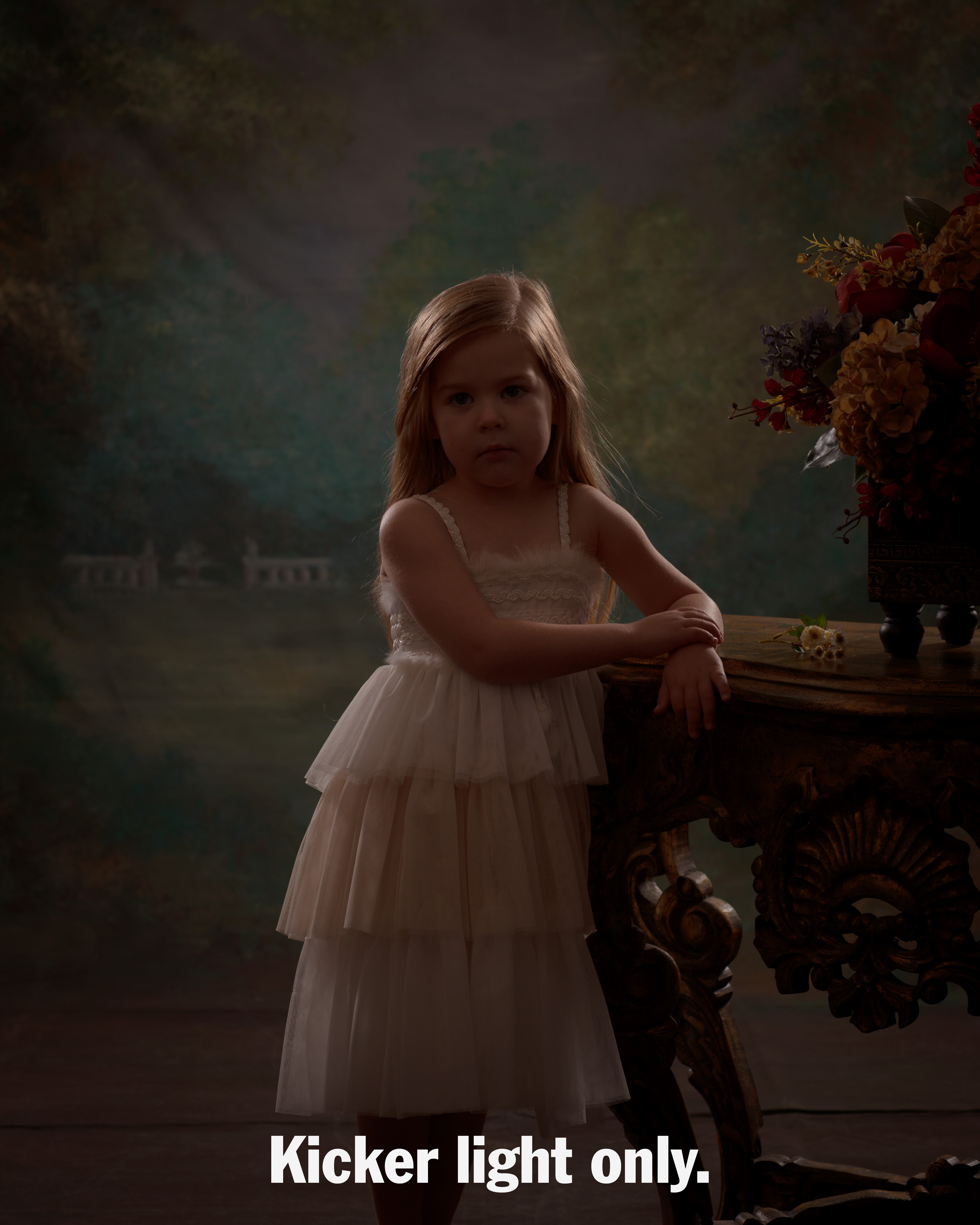
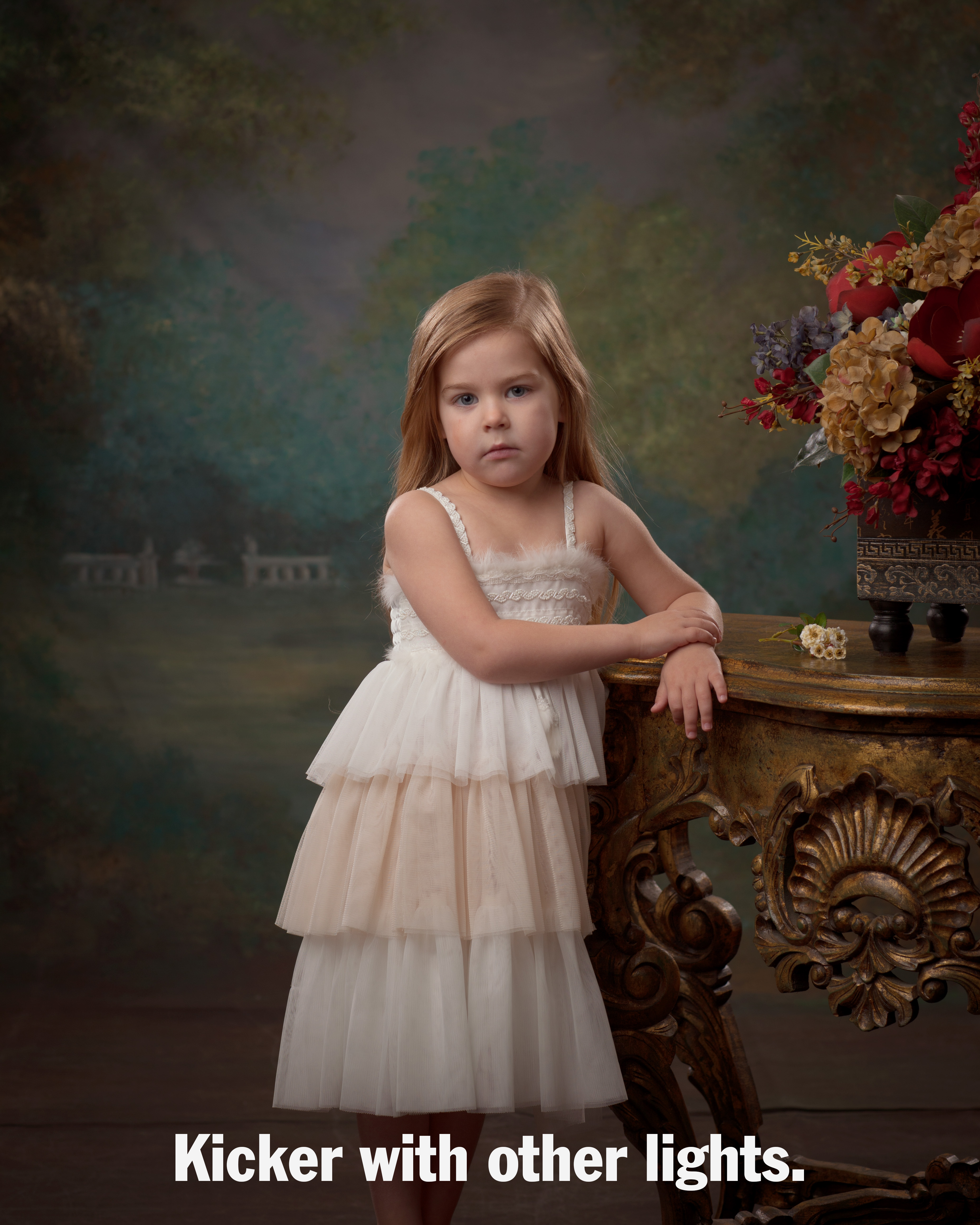
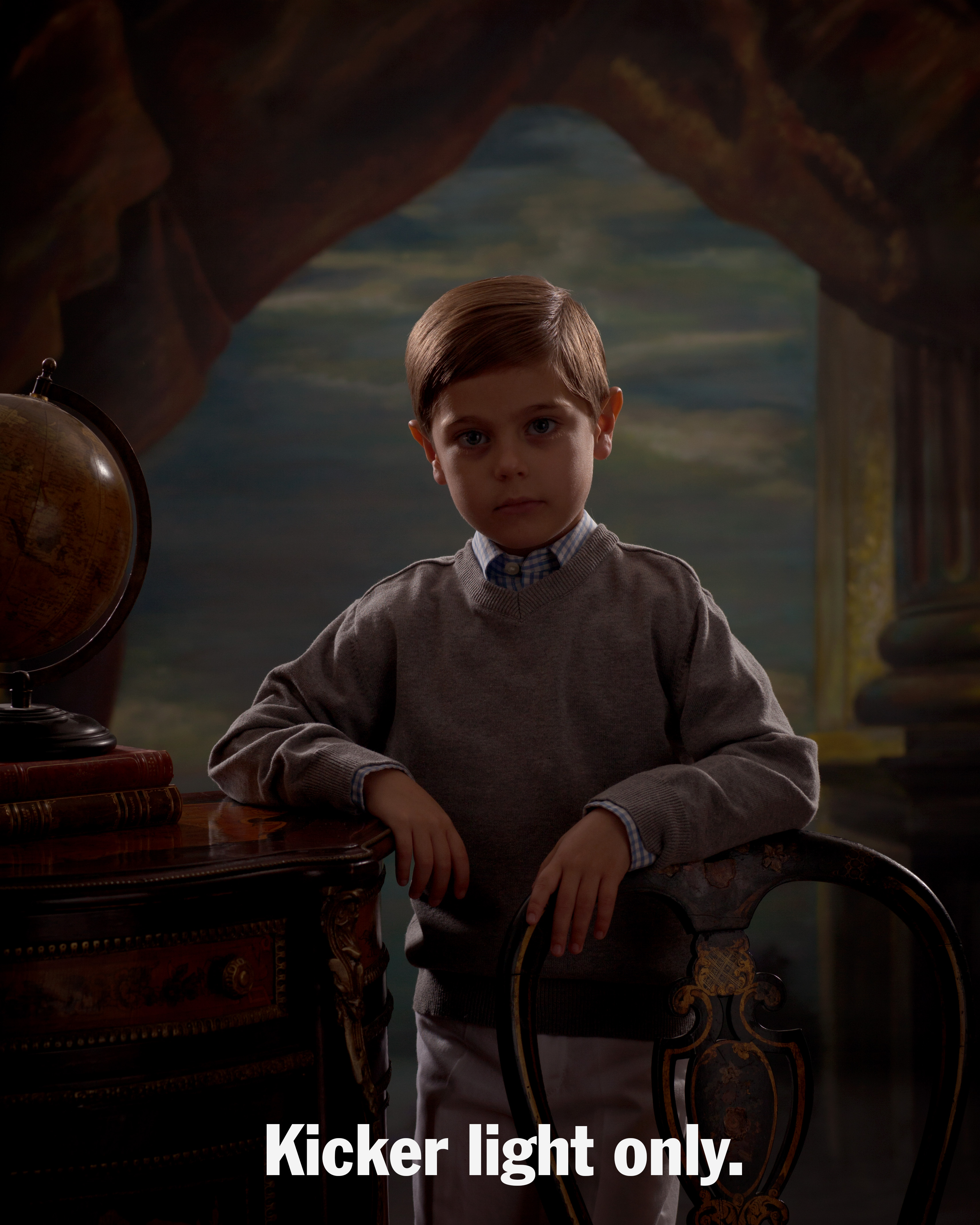
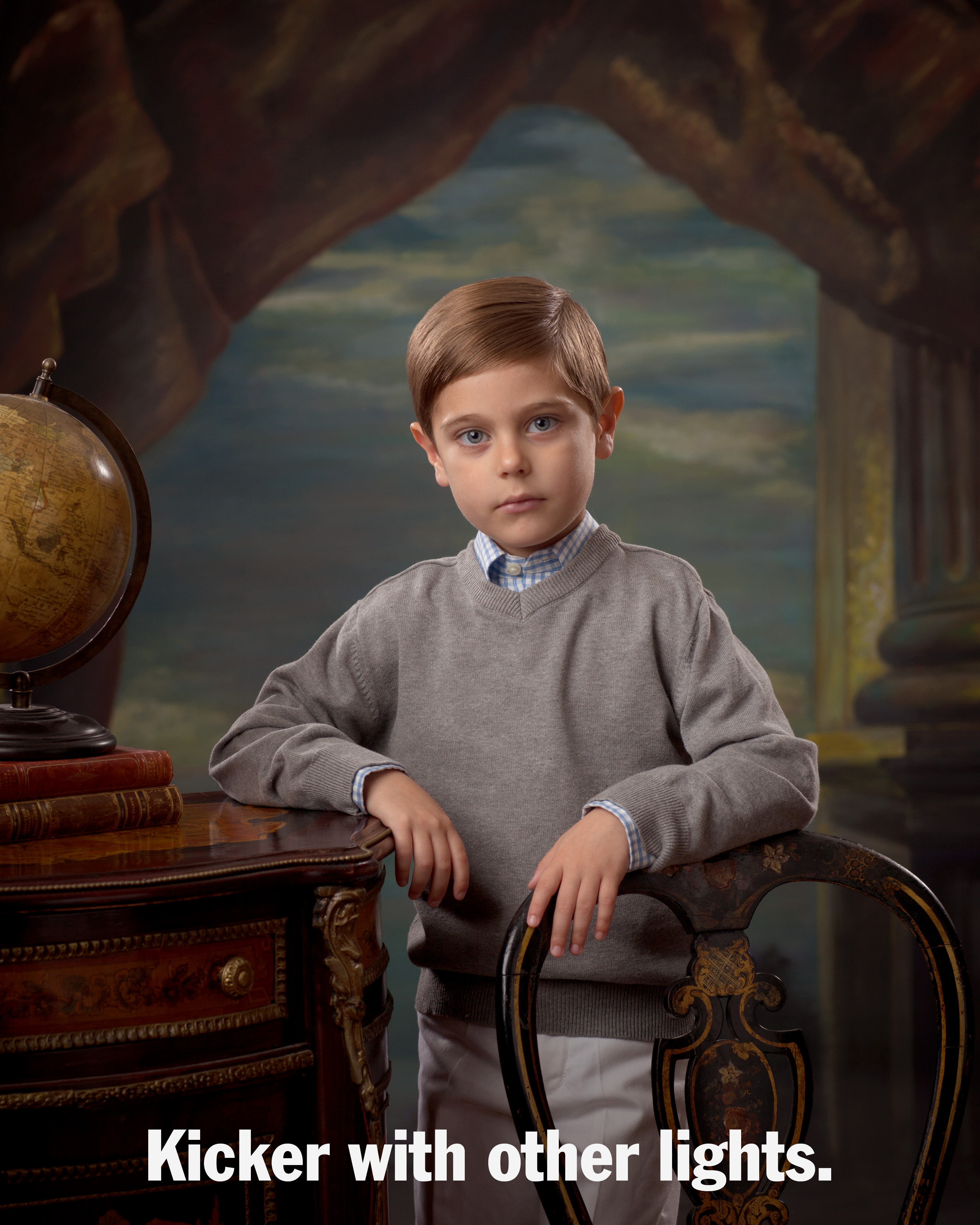
When studying the portrait work of Yosuf Karsh and Arnold Newman, you will notice ample use of Kicker lights. In many instances, these are used from both sides of the subject to create a dramatic effect.
There is a portrait by Karsh of Fidel Castro in which there is no apparent use of a Key light in the traditional way. Two Kickers actually do the job of the Key light… a very dramatic image indeed!
A simple way to set up the intensity of your lights for most situations is as follows: Set the Key light to the desired F-stop. Next set the Fill light so that you achieve the desired lighting ratio and then, if you are using a Kicker, set it to the same identical output as the fill light. For example: If the Fill light reads f/6.3 at the location of the subject, the Kicker should read f/6.3 as well.
Finally take an overall reading from your subject’s position pointing your meter towards the lens. Use this reading to set the exposure settings in your camera.
You probably have heard the term that a light is hard or soft, etc. The Accent light always looks as if it came from a hard light source. That may not necessarily be the case, as the light quality appears to be specular due to the angle of incidence, even when it originates from a soft source.
In conclusion, if you have not used an accent light before, try it using the instructions above and discover the difference lighting with an accent can bring to your portrait work.
Note: Gabriel operates Gabriel Portraiture in Ft. Worth, Texas. He is a frequent speaker at regional and state conventions and regional photography schools. He is well known for his classic style.